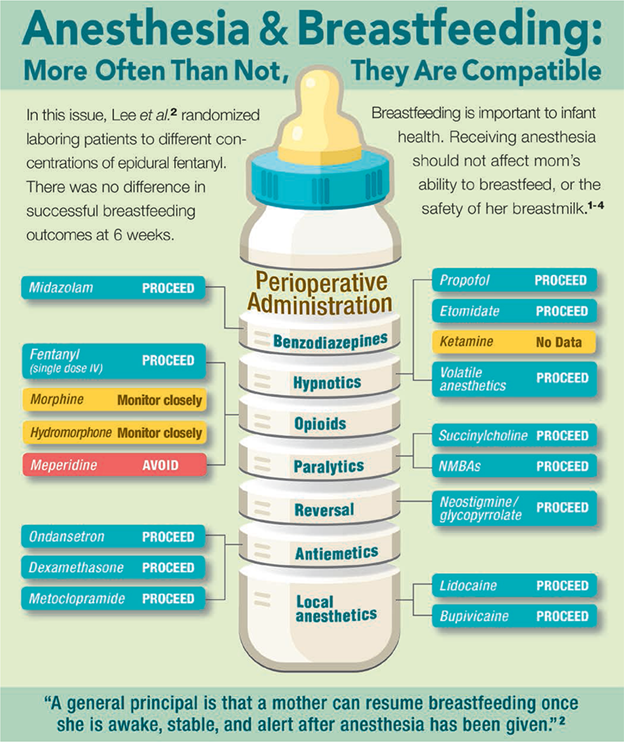By Donnie Vinson, MD, Medical Director, CRH Anesthesia
A recent conversation with a CRNA in Florida shed light on anesthetics for nursing women. It is common for us to encounter breastfeeding mothers who choose to undergo sedation or general anesthesia for colonoscopy, upper endoscopy, and various other procedures.
Naturally, these patients have concerns about returning to breastfeeding following their anesthetic. It was previously recommended that women discard breast milk (“pump and dump”) immediately after surgery before they resumed breastfeeding. This outdated recommendation was made before data became available on the accumulation of drugs in breast milk, yet is still widely circulated on the internet, creating considerable confusion among patients and providers.
On October 23, 2019, the American Society of Anesthesiologists’ Committee on Obstetric Anesthesia approved a statement called, “Statement on Resuming Breastfeeding after Anesthesia.” The ASA statement provides evidence-based information so anesthesia providers can appropriately counsel nursing mothers as to when they may safely resume breastfeeding and address concerns of adverse neonatal effects from medication exposure via breast milk. The statement comes after the committee reviewed existing guidelines and analysis on the concentration of anesthetic drugs in breast milk. The statement summarizes relative infant dose (RID) values. RID considers relative neonatal exposure by considering maternal and infant weight as well as the concentration of drug in breast milk to evaluate the percentage of drug present in the baby relative to the mother. RID levels less than 10% are generally considered safe. RID values (reported in %) for our commonly used anesthetics are: propofol 0.1, lidocaine 0.1, etomidate 0.1, fentanyl 1.0, midazolam 0.3; interestingly, morphine is 9 and ketamine is shown as “unknown: recommend only if medically necessary.” Two of the five final recommendations in the statement include: (#1) All anesthetic and analgesic drugs transfer to breast milk; however, only small amounts are present and in very low concentrations considered clinically insignificant; and (#5) Patients should resume breastfeeding as soon as possible after surgery because anesthetic drugs appear in such low levels in breast milk. It is not recommended that patients “pump and dump.”
The link to the ASA statement is below:
Statement on Resuming Breastfeeding after Anesthesia (asahq.org)
In summary of the topic, I present you with this diagram from the October 2017 issue of Anesthesiology: Reference link to the diagram and article “Anesthesia and Breastfeeding: More Often Than Not, They Are Compatible”: https://anesthesiology.pubs.asahq.org/article.aspx?articleid=2654616

